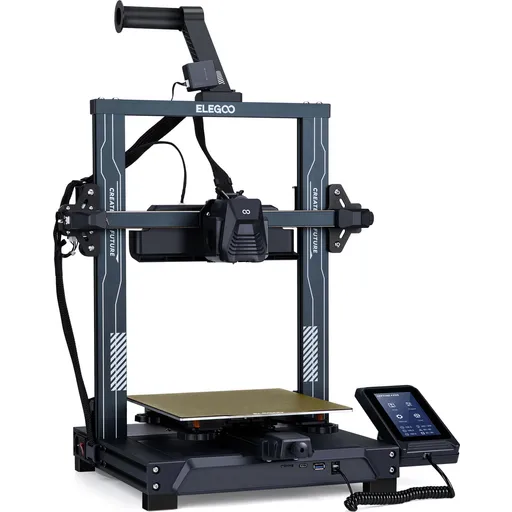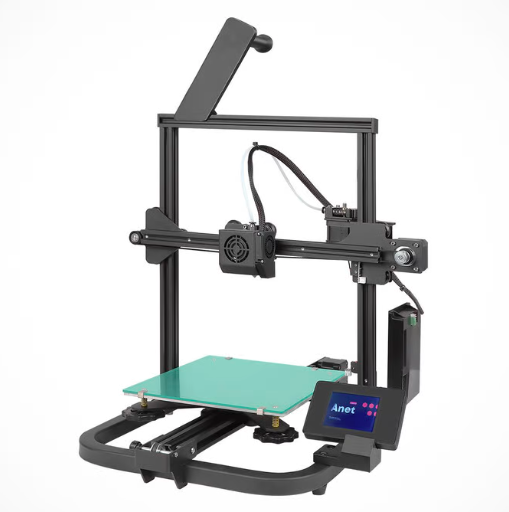Compare Neptune 4 PRO vs A8 V2
Comparison between the best 3D printers
Choose the best 3D printer at the best price. The cheapest 3D printers are here.
Buy a 3D printer here with 3D Fila.
 |
 |
|
| Model | Neptune 4 PRO |
A8 V2 |
| Printing Material | Filament | Filament |
| Buy Filament for Elegoo Neptune 4 PRO | Buy Filament forAnet A8 V2 | |
| Estimated price | $359,00 | $129,00 |
| Manufacturer | Elegoo | Anet |
| Release Year | 2023 | 2021 |
| Print Volume [mm] | 225x225x265 | 220x220x250 |
| Printer Size [mm] | 475x445x515 | 428x441x486 |
| Weight [kg] | 8,9 | 6,2 |
| Power Loss Recovery | YES | NO |
| Enclosed printer | NO | NO |
| Bed Leveling | Automatic | Manual |
| Filament End Sensor | YES | NO |
| Bed type | Heated | |
| Power supply system | Direct Drive | Bowden |
| Standard nozzle | 0,4 | 0,4 |
| Maximum Nozzle Temperature [°C] | 300 | 230 |
| Maximum Bed Temperature [°C] | 110 | |
| Maximum printing speed [mm/s] | 500 | 150 |
| Filament holder | YES | YES |
| Camera for supervision | NO | NO |
| Recommended filaments | PLA, PLA+, TPU, PETG, Nylon, ABS | PLA |
| Recommended slicers | Bambu Studio, Super Slicer, Cura, Prusa Slicer, Orca | Cura, Simplify, Slic3r, IdeaMaker |
| Maximum Resolution [mm] | 0,1 | 0,1 |
| Processor | ARM 64 bit | |
| Display | Touchscreen 4,3'' | Display touchscreen 2,8'' |
| Power Supply | 310 W | 110/220V / 250W |
| Connectivity | USB, microSD | SD / USB |
| Operating systems | Windows, Linux, Macbook | Windows, Mac, Linux |
| Date of registration in the system | 2024-07-02 | 2022-11-10 |
| Release date | 2023 | 2021 |
| Extra features | The Elegoo Neptune 4 Pro stands out for its advanced features, including pre-installed Klipper firmware, a dual-gear direct extruder with a 5.2:1 ratio, a high-temperature nozzle (up to 300°C), a flexible magnetic PEI platform, efficient cooling fans, and a 121-point auto-leveling system. The printer also features a 4.3-inch touchscreen interface, dual linear bars on the X and Y axes, and a segmented heated bed for energy savings. | The Anet A8 V2 is a Cartesian-XZ type 3D printer with a build volume of 220 x 220 x 250 mm, Ender 3 design and V-slot assembly. It has a 32-bit motherboard and touchscreen interface, promising ease of use. It uses open source firmware and has thermal failure protection. It stands out for its cable organization and the absence of a heated bed, focusing on energy savings and PLA printing. It comes with an external power adapter, aiming at greater safety, especially for beginners and educational use. |
| Support for multiple colors and materials (AMS and CFS) | NO | NO |
Notes * |
||
| Cost-benefit | 7 / 10 | 6 / 10 |
| Hardware | 2.8 / 10 | 0.5 / 10 |
| Tela | . | . |
| Print volume | 3 / 10 | 3 / 10 |
| Performance | 4 / 10 | 1 / 10 |
Conclusion |
| In comparing the Elegoo Neptune 4 Pro and the Anet A8 V2, it becomes clear that the Neptune 4 Pro is a more advanced and capable 3D printer, though at a higher price point. The Neptune 4 Pro excels with features such as automatic bed leveling, a direct drive system, a higher maximum nozzle temperature, and faster printing speeds. Its user-friendly design is further enhanced by a larger touchscreen interface and a comprehensive filament compatibility, making it suitable for a variety of materials. On the other hand, the Anet A8 V2, while more budget-friendly, is limited by its manual bed leveling and lower maximum temperature, restricting its filament options primarily to PLA. Although it has appealing traits such as an open-source firmware and focus on safety, particularly for novice users, it does not offer the same level of performance or features as the Neptune 4 Pro. Ultimately, the choice between these two printers will depend on one's budget and intended use. Those seeking advanced performance and versatility in 3D printing will find the Elegoo Neptune 4 Pro worth the investment. In contrast, the Anet A8 V2 may appeal to beginners or those who primarily work with PLA and require a more economical option. Hence, for users serious about 3D printing and looking for robustness and reliability, the Neptune 4 Pro stands out as the superior choice. |

